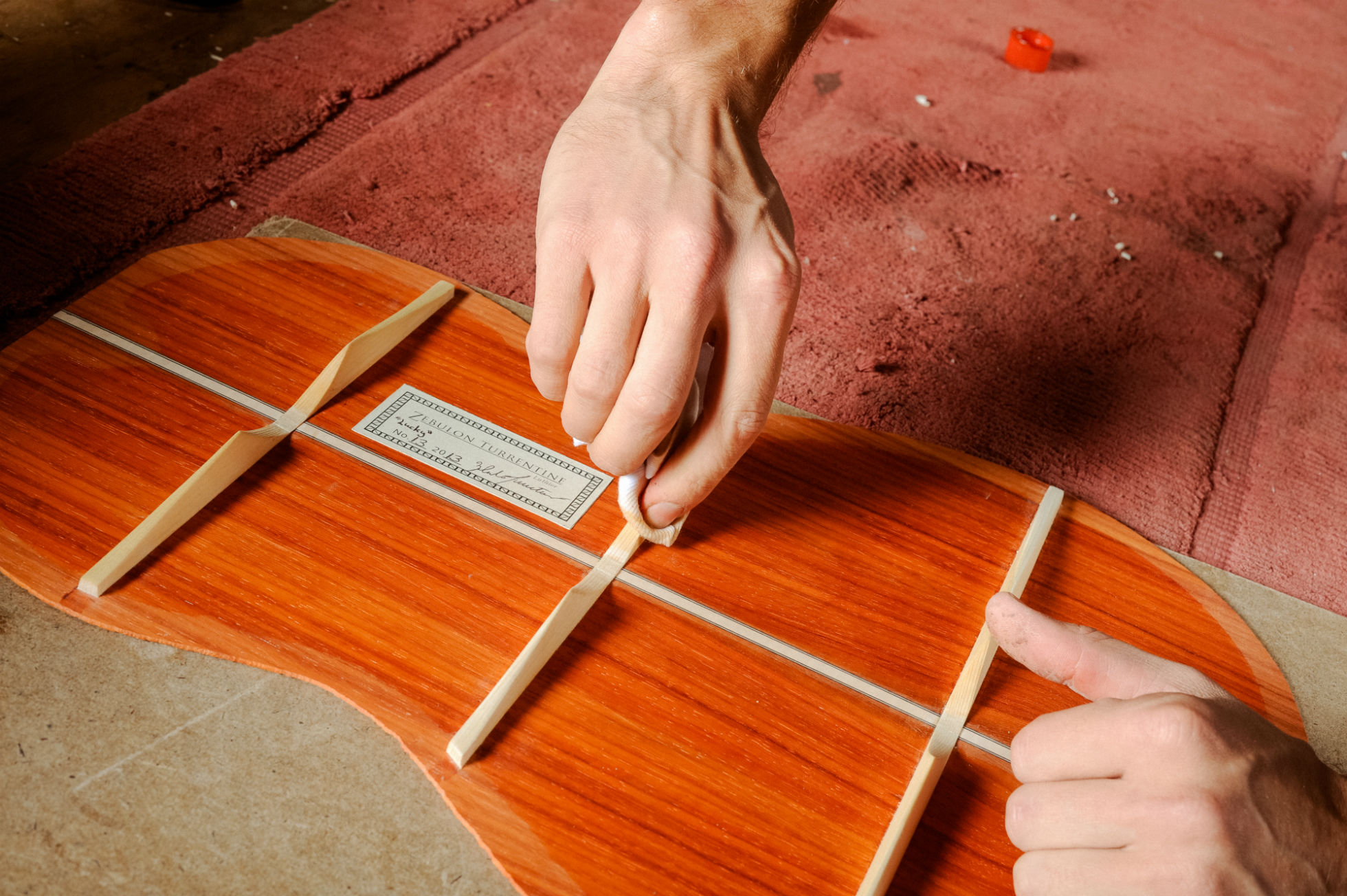Defining the Handmade Guitar
 The word “handmade” is one the oldest, feel-good labels we can attribute to a product and it is the prerequisite of each customer on the market for a concert quality classical guitar. But what does this word mean today and what qualities should its products possess?
The word “handmade” is one the oldest, feel-good labels we can attribute to a product and it is the prerequisite of each customer on the market for a concert quality classical guitar. But what does this word mean today and what qualities should its products possess?
A guy for whom my father built a house back when I was in high school furnished a portion of his home with some new furniture that was badly damaged - beaten to be exact. When my father inquired about the damage the man replied that he had beaten the pieces of furniture with a chain to make them look “handmade”.
First, let’s agree that beating a guitar ( or something else ) with a chain doesn’t make it more “handmade”. It simply accelerates its designation as garbage. Furthermore, let’s agree that defects or imperfections in workmanship don’t make a guitar more “handmade”. They are simply displays of poor craftsmanship or an immature building process. In the worse case and least forgivable scenario, they embody carelessness. Lastly, let’s agree that the large all-encompassing label of “imperfect” is not an adjective we will use under any condition to define “handmade.”
Some would argue that the mere use of power tools in the building process disqualifies a luthier from building a “handmade” instrument. While I think most luthiers would agree this is an unrealistic and unpractical demand, there are more than a few luthiers that follow this path as a unique selling point. Don’t misunderstand me. I believe that performing a well executed inlay or joint with hand tools is a powerful expression of a luther’s talents - especially in a trade proliferated with computerized routers. Even so, while many hand tools are still a crucial part of the building process, claims that they somehow improve the quality of the final product are hard, if not impossible to substantiate. They only change the way we feel about the final product.
So where do you draw the line? What makes a guitar handmade if not doing the work literally by hand?
My answer is that a classical guitar is “handmade” when the maker refuses to trade quality for increased production. There are many opportunities in the building process where even a luthier using historic hand tools can let poor workmanship slide out the door and into a customer’s hands in order to meet her production goals.
Every independent luthier and large guitar company should have a vision for what kind of guitar they wish create. The “handmade guitar” label belongs to the maker that realizes she can’t afford to build and sell guitars that fall short of that ideal. It’s the old story of the short term vs. long term. One is backed by the simple, straightforward guarantee of an individual’s integrity and other...well...you better read the fine print.
